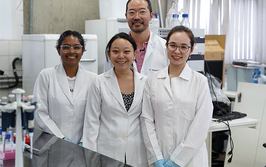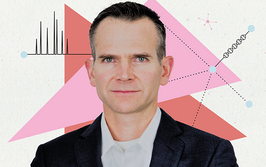A Level Playing Field?
Last year, we berated ourselves for the disappointing show of women in our Top 100 Power List (a measly eight percent). So, how did we do in our Top 40 Under 40?
For the 2014 Power List, we wanted to take a break from the Top 100 most influential analytical scientists and instead focus on “the next generation” (the Top 100 will be back in 2015). The Top 40 Under 40 has a pleasant ring to it (and if it’s good enough for Fortune, it’s good enough for us – though the timing is purely coincidental). Throughout the process, one question was burning in our minds – a legacy from our inaugural Power List – will women be better represented?
Thankfully, we can answer that question with a sigh of relief. In fact, a refreshing 32.5 percent of the 2014 Power List are women. And, while it’s some way off the ‘ideal’ ratio of 50:50, it does perhaps reflect the current realities of women in science. In any case, we’ve come a long way from the days when Apryll Stalcup (see Sitting Down With, page 50) was the only female in the class at graduate school: “I grew up in the USA in an era when women didn’t really do science. I wasn’t aware that it was even an option for me,” she notes.
As far as our list goes, it appears as though society is moving roughly in the right direction – I’d be interested to hear your thoughts. Certainly, the nominees for the Top 40 Under 40 were overwhelmingly positive about their chosen career; if given the chance to go back and change their path, would they do so? A resounding “no!” was the response.
That’s not to say that inequality doesn’t exist in science. It does. American astrophysicist Neil deGrasse Tyson (head of New York City’s Hayden Planetarium) tackled the question of “women in science” in an amusing but very astute way back in 2009 (1): “I’ve never been female…” he begins, “but I have been black my whole life.” He goes on to say that despite wanting to be an astrophysicist since the age of nine, it was “hands down, the path of most resistance through the forces of society”.
“Don’t you want to be an athlete?” teachers would ask. The story echoes Stalcup’s. How did Tyson get to where he is today? Simple: because his interest in the universe was so vast, and because he was so absolutely driven that he pushed through all the obstacles placed in his path – just like Stalcup. But how many great scientists get lost along the way – pushed out by outmoded expectations?
Rebuking previous answers to the question of women (or other minorities) in science, Tyson concludes, “Before we start talking about genetic differences, [we’ve] got to come up with a system where there’s equal opportunity…”
To conclude – never mind the backlash – enjoy The Power List Top 40 Under 40 issue!
- Neil deGrasse Tyson at a New York Academy of Sciences, Center for Inquiry conference: “Secular Society and its Enemies.” tas.txp.to/1014/tyson (for the full panel discussion, visit tas.txp. to/1014/tyson2).

Rich Whitworth completed his studies in medical biochemistry at the University of Leicester, UK, in 1998. To cut a long story short, he escaped to Tokyo to spend five years working for the largest English language publisher in Japan. "Carving out a career in the megalopolis that is Tokyo changed my outlook forever. When seeing life through such a kaleidoscopic lens, it's hard not to get truly caught up in the moment." On returning to the UK, after a few false starts with grey, corporate publishers, Rich was snapped up by Texere Publishing, where he spearheaded the editorial development of The Analytical Scientist. "I feel honored to be part of the close-knit team that forged The Analytical Scientist – we've created a very fresh and forward-thinking publication." Rich is now also Content Director of Texere Publishing, the company behind The Analytical Scientist.

















